A to Z - HIGHLIGHTS OF DERBY AND DISTRICT - PART 18
The A to Z – highlights of Derby and District is a 19-part series and will be published weekly.
Thulston – Wardwick

THULSTON
Thulston is a very small village south of Elvaston off the B5010. It is in the same parish as Elvaston and Ambaston, which it is thought had a Viking settlement around 900AD. There is some modern development in what is normally a very quiet village. The Harrington Arms is a popular pub, much loved by walkers who enjoy exploring the paths on the grounds of Elvaston Castle.
TWYFORD
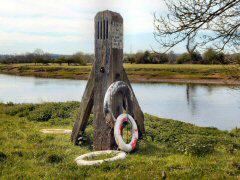
The pretty village of Twyford is located along the northern bank of the River Trent, off the Willington to Swarkestone road. Before 1963, there was a chain ferry across the river at Twyford. The ferry is no more the floods during the winter of 1963 saw the ferryboat swept away, and it was never reinstated. The posts that supported the chain remained on both sides of the river.
UNIVERSITY
The University of Derby (formerly Derby College of Art and Technology or simply Derby College) has grown markedly in stature as one of the United Kingdom’s best-performing Universities. It traces its history back to the establishment of the Derby Diocesan Institution for the Training of Schoolmistresses in 1851. University status was awarded in 1992 when it was one of several educational establishments throughout the country up-graded to university standing.
VERNON GATE – THE COUNTY GAOL (DERBY PRISON)
The Corn Market Gaol was demolished in 1756 and a new gaol was built on Friar Gate. It was designed to hold a maximum of 29 prisoners ranging from debtors to those awaiting execution. This soon proved insufficient and a new county gaol was built on Vernon Street after a long wait. Designed by Francis Goodwin and opened in 1827, it was claimed to be ‘One of the most complete prisons in England.’
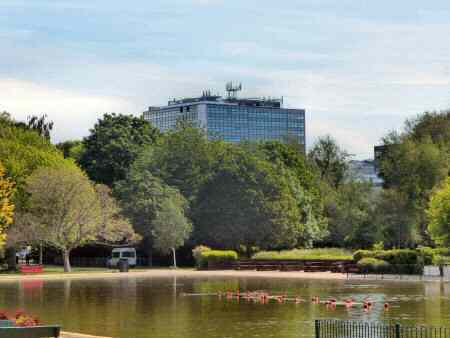
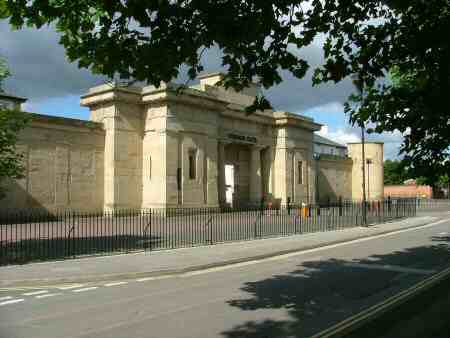
QUEEN VICTORIA STATUE
The bronze statue of Queen Victoria, currently sited on London Road, was donated by the celebrated Derby Engineer, Sir Alfred Seale Haslam. Originally located at The Spot it was unveiled by King Edward VII on 28 June 1906. Queen Victoria made her only state visit to Derby in 1891. When she laid the foundation stone of the new Derbyshire Royal Infirmary and knighted the Mayor, Alderman Alfred Seale Haslam at Derby Railway Station.
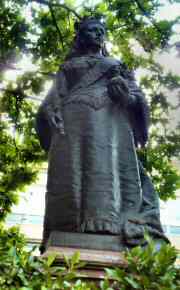
VICTORIA STREET
Until the early part of the 19th century, the Markeaton Brook was an open waterway that flowed through Derby. Before culverting in the 1830s, it was navigable for small boats as far as Brook Walk. For the delivery and collection from the mills in the area. The problems were that the brook flooded and also all manner of foul-smelling waste was deposited in the water.
The section linking St James’ Bridge, at the end of St James’ Street and St. Peter’s Bridge at the intersection of Peter’s Street and the Corn Market was known as Brookside. In addition to St Peter’s Bridge. A further footbridge led to the County Gaol, which had been built across the brook between St Peter’s Street and the Corn Market. This was known as the Gaol Bridge.
In 1837, the brook was covered with a brick culvert and by 1841, it had been renamed Victoria Street. Culverting of what we now know as, Albert Street and The Strand followed later. The creation of these new streets brought benefits to the local community. This led to the building of some extremely fine Victorian buildings. Throughout most of the 20th century, Victoria Street became a prime city-centre shopping location.
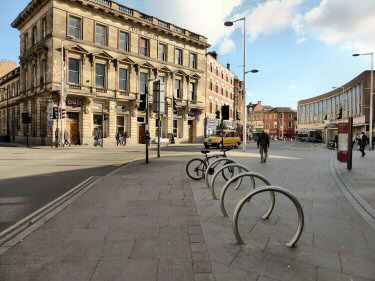

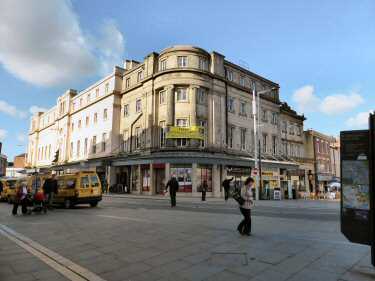
VICTORIA STREET – OLD POST OFFICE
In 1869 the General Post Office occupied the corner site with Victoria Street. The 1869s Post Office’s name is still visible on the front. Later the post office was moved further along Victoria Street#. Before, in May 2013 it moved to Babington Lane.
VICTORIA STREET – FORMER RANBY’S/DEBENHAMS
An important building in Victoria Street was the former Debenham’s Departmental Store before moving to the currently named Derbion in 2007. It had an interesting curved shaped frontage and was the home of Silly Sid’s furniture shop for a time. Previously it had been the home of Ranby’s Departmental Store. The whole area is now being re-developed and Debenham’s is no longer in business.
VICTORIA STREET – ROYAL HOTEL
The Royal Hotel, on the corner of the Corn Market and Victoria Street, was built in 1837 by Robert Wallace. He designed a group of buildings, originally consisting of a hotel, the Athenaeum and a Post Office. He also designed the Derby and Derbyshire Bank, which was adjacent to the proposed new development. The Royal Hotel soon became the town’s leading location for visitors and a popular place for public celebrations. It closed in 1951.
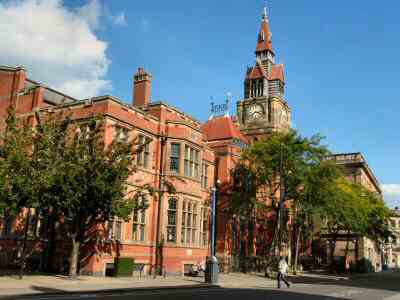
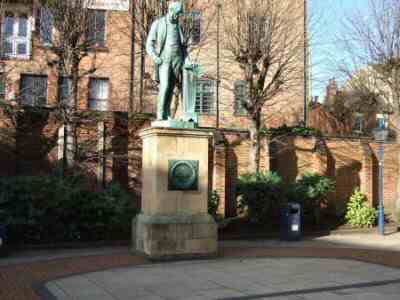
WARDWICK
The road was widened in 1914 when three large houses on the north side were pulled down. As a result of the demolition, a garden was created by the museum, an extension of which in 1984 created the present Museum Square. The iron railings and gates were re-erected in front of the park facing Nightingale Road. At roughly the same time that the road was widened, the Museum and Art Gallery were expanded. The library and museum were paid for by Michael Thomas Bass, whose statue stands in Museum Square.

WARDWICK – FLOOD MARKER
An iron plaque is fixed to the front of the former Wardwick Tavern that marks the level the floodwaters reached on 1st April 1842. Subsequent rises in the level of the street reduce the true impact of the sign. The flood was caused by Markeaton Brook bursting its banks in the days when it flowed above ground through the town centre. This was exceeded by a similar flood in 1932 when the brook burst its culvert.
WARDWICK – MECHANICS’ INSTITUTE
The institute was founded by Joseph Strutt in 1825. It was open from early in the morning until ten at night. There were classes for reading, writing, arithmetic, drawing, music, French and chemistry for adults. A class also met weekly to discuss literary and scientific subjects. The library contained nearly 6,000 volumes and newspapers and periodicals were provided.
